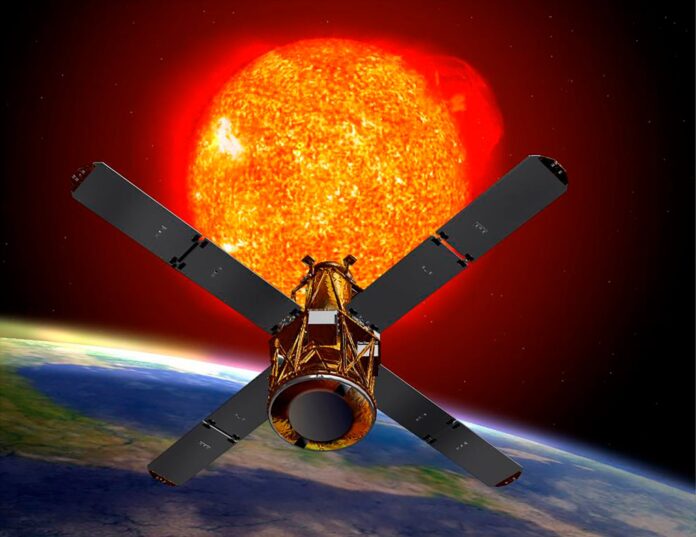Are you ready for a space crash landing? No, we’re not talking about aliens invading Earth. We’re talking about the RHESSI – the 660-pound Reuven Ramaty High Energy Solar Spectroscopic Imager. Try saying that 10 times fast. This thing has been floating in space for over 20 years, watching solar flares and plasma clouds like a creeper.
Now, the Department of Defense predicts that the RHESSI will make its grand reentry into Earth’s atmosphere at 9:30 p.m. Eastern time on Wednesday. Or, uh, maybe sometime within the next 16 hours. It’s like giving us a 2,467 chance of getting it right. No pressure, RHESSI.
Before RHESSI was sent to retirement in 2018, it had one job – to give us a peek at the sun’s private solar flares. It snapped more than 100,000 images in high-energy X-rays and gamma rays. Basically, it was like a solar paparazzi, trying to capture the most candid moments of the sun.
Thanks to RHESSI’s hard work, scientists figured out how the sun creates these energy bursts. But now it’s no longer communicating because, let’s be honest, it’s just too old to deal with that technology.
RHESSI has been sharing space with thousands of other retired objects like it, dangling around earth in what we like to call space debris. But the US government requires all non-operational satellites to leave Earth’s orbit within 5 years…because, trust us, we don’t need even more space junk.
If you think satellites are immune to malfunctions or running out of gas, think again. They can float in space like a lost puppy, eventually burning up in Earth’s atmosphere. Or they can land in the southern Pacific Ocean – otherwise known as the spacecraft cemetery. We’re not even joking.
And don’t forget about destructive anti-satellite tests that blow up satellites like they’re playing Space Invaders. This is why we can’t have nice things. NASA estimates that there are over 500,000 objects from 1 to 10 cm in diameter orbiting around Earth. Yikes.
In conclusion, we need to clean up our space because it’s starting to look like a college frat house. Space is getting crowded with debris and it’s not cute. We need to put more resources into cleaning it up – not only for future space exploration but also for our planemosphere (planet atmosphere). So, RHESSI, consider this your wake-up call. It’s time to touch down and retire right where you belong – Earth’s crust.
Serious News: washingtonpost

